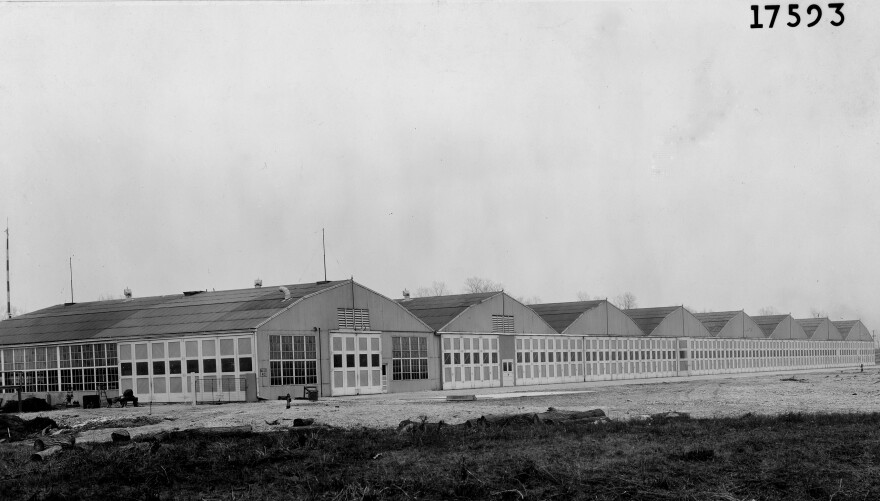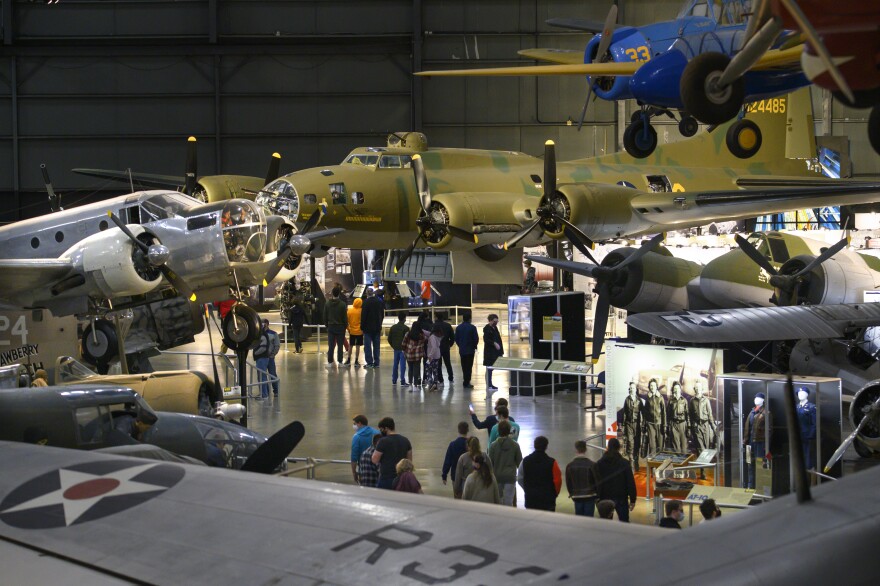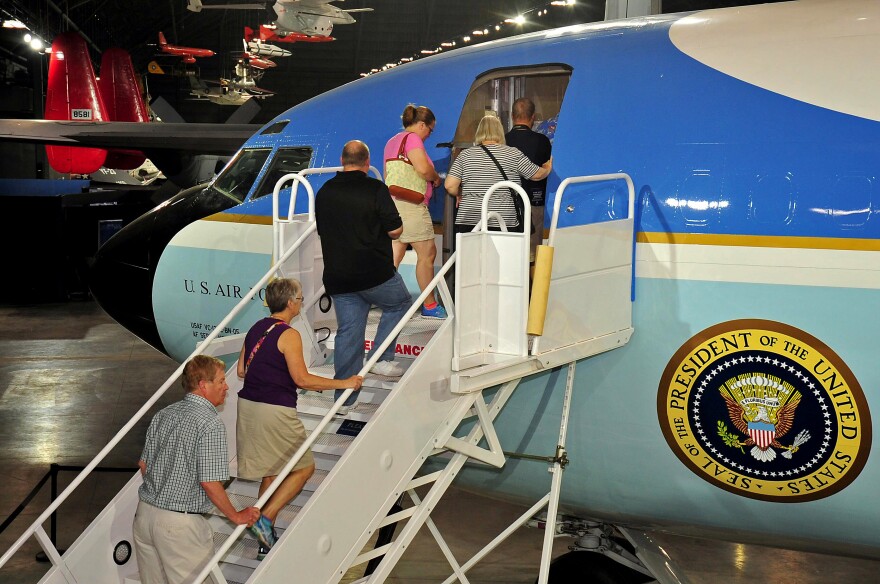Ohio isn't just the birthplace of aviation, it's also home to the world's biggest and oldest military aviation museum, which marks its 100th anniversary this week.
The National Museum of the United States Air Force near Dayton turns 100 Tuesday.
"The day we've pinned it on is May 16 because that day in 1923 is when the museum was reported in the press to be ready for visitors," explains curator and historian Doug Lantry.
RELATED: Dayton museum plans special exhibits to honor 75th anniversary of the U.S. Air Force
The museum was created, Lantry reports, in the wake of burgeoning interest in military aviation following World War I. The Army built a small museum to show off the technology it had collected from across Europe to help its engineers build better airplanes.
That became the basis of what is now a sprawling complex covering nearly 21 indoor acres — plus additional outdoor space — with more than 136,000 artifacts, including around 360 aerospace vehicles.

Why outside of Dayton, Ohio?
It's a good question, Lantry says, and it has a lot to do with Dayton's aviation heritage.
"The Army cited its technology and research functions here principally because Dayton was a center of invention and innovation," he says. "And because the Wright brothers had invented flight here, this became the natural place to continue those studies."
Learn More: First And Only African American Woman U-2 Pilot Shares Her Experiences
The collection continued to grow, as did the industry. That meant the Army's collection and little museum grew, too.
"It eventually became so big that it was impractical to move it anywhere else, and so we have the great big museum still here today."
The Air Force dates to Sept. 18, 1947, when the first secretary of the Air Force, Stuart Symington, was sworn into office following the signing of the National Defense Act.
"We actually start(ed) in 1907 when the Aeronautical Division of the Army Signal Corps was created," Alyssa Leicht, museum curator, told WVXU in 2022 as the Air Force marked its 75th anniversary.
"The reason we trace our roots back to that time is because that's really when aviation first started under the Army. We see it as a continuum of a story that started with the acceptance of the first military airplane and just continued to increase — technological progress over time as the airplane changed; as more airmen were trained," Leicht explained.
How is the Smithsonian's Air and Space Museum different?
People may be surprised that such a gigantic air and space museum is here in Ohio, rather than part of the Smithsonian National Air and Space Museum in Washington, D.C.
Lantry points out the two have separate missions. The Air Force museum focuses solely on military aviation, whereas the Air and Space Museum includes civil aviation.

Commemorating 100 years
The museum is marking this historic milestone with a year-long special exhibit titled100 Years of Heritage: National Museum of the U.S. Air Force, 1923-2023.
It details the museum's history — which predates the Air Force — and includes historical documents, photographs and rare artifacts that aren't frequently displayed.
"That includes Eddie Rickenbacker's handwritten diary; a very interesting map that a pilot used in the Korean War; some space items like astronauts wake-up music tapes that they carried in space; and things that POWs made in Southeast Asia," Lantry details.
He says visitors can also get a first look at the new U.S. Space Force Service dress uniform.
"It's very different looking than a traditional Air Force uniform," he adds.
The anniversary exhibit opens May 21.

Attendance figures and other fun facts
The National Museum of the U.S. Air Force averages more than a million visitors each year. Lantry says 2003 was the museum's best at 1.3 million visitors, driven largely by the anniversary of the Wright brothers' centennial. Numbers dropped during the COVID-19 pandemic when the museum was closed for a while.
RELATED: Memphis Belle Exhibit Opens On 75th Anniversary Of Historic Return
"We're on track to start rebuilding our numbers ... to normal attendance figures," says Lantry. "We hope with our anniversary year and with the end of the pandemic and growing ability of people to travel and want to go out and see things and be with other people, that will rebuild our attendance to its former scale."

Lantry provided the following additional facts:
Attendance:
• Over the last 26 years the museum has averaged more than a million visitors annually
• Total visitors 1997-2022 = 26.4 million (26,417,985)
• The museum's best year was 2003 (1.3 million), the 100th anniversary of the Wright brothers' invention of powered flight
• Its lowest year was 2020 (270,020 visitors), the pandemic year
• Figures have been rebounding since, and were over 650,000 last year (658,558 in 2022)
• It's early, but the museum is on track for another significant increase this year with the 100th anniversary and other events and new exhibits/programs
Other fun facts (from the forthcoming exhibit)
Today’s National Museum of the USAF is the world’s largest military aviation museum. Its galleries and collections span all eras of military aviation and spaceflight from 1909 to the present.
• 14 total buildings covering 1.4 million square feet
• 907,000 square feet devoted to indoor exhibit galleries — about 21 acres
• 495,000 square feet devoted to museum support functions including storage, research, exhibits fabrication, restoration, conservation, base operations support and utilities
• 7,000-foot runway for aircraft acquisition and flying events
• More than 136,000 museum artifacts in the collection overall, including about 360 aerospace vehicles on exhibit
• More than 2,400 vehicles and nearly 45,000 other artifacts on loan to 772 qualified organizations worldwide
• Archival holdings total around 10,000 linear feet of documents, posters, personal manuscripts, technical data and other media, and about 400,000 photos.



